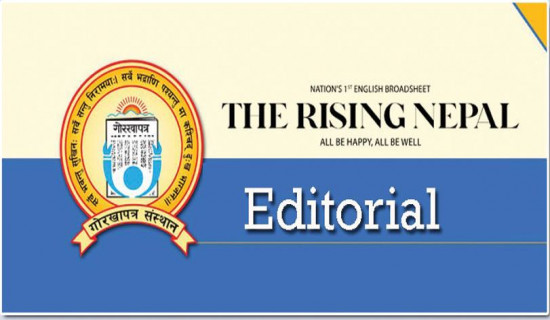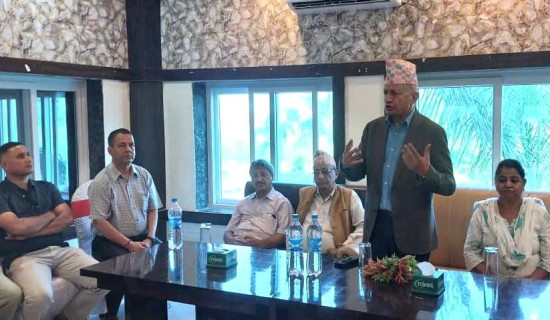- Sunday, 26 October 2025
Revive Hetauda Textile
Nepal can well be a hub of textile manufacturing, given the low labour cost and growing supply of cheap electricity. The Nepal Army's keenness to revive the long-closed Hetauda Textile Factory (HTF) holds promise for the country's garment sector. Having been in several businesses alongside being involved in countless development works like road construction for a long time now, the NA is sure to have developed a crucial acumen to successfully run an industry of national pride. But without deep understanding of the past shortcomings that caused the factory to go bust some 25 years ago and thoroughly learning its lessons, the revival effort may encounter unforeseen setbacks. That much of the tools and machines, including sewing machines, in the mill are still functional will surely lower the investment needed to give it a new lease of life.
Overstaffing, managerial failures, lack of ability to compete with similar products manufactured elsewhere both in quality and price, crippling power shortages, among other factors, are cited as reasons that brought the HTF to its eventual closure. One widely known reason that had made our products up to '30 per cent' more expensive than our rival clothes woven in India or China for example is a heavy export subsidy lavished on them by their state governments. If needed, the government shouldn't hesitate to provide such a subsidy to offset that problem.
After all, an apparel attractive in design, sturdy in quality and affordable in price will find no shortage of buyers. But, missing of any one of these attributes will make it a hard sell. If making it appealing enough to persuade the buyers means providing training to factory workers abroad, the option must be embraced. The global apparel industry is worth about $2 trillion dollars, and being able to grab a tiny share of it would bring untold prosperity. There are already a growing number of homegrown textile producers – like Sonam gears – that have become highly successful in giving their international competitors a run for their money and build a formidable customer base. Taking a leaf out of their book can be helpful.
Learning from neighbouring Bangladesh's example can also be valuable. Once an impoverished nation, it has grown to become the world's biggest garment exporter, after China, lifting millions out of poverty and significantly improving the standard of people's living. But the dire power shortage it has faced in recent years has threatened even its crown jewel industry: textile. This explains why Bangladesh has been keen to import electricity from Nepal.
Once resuscitated, the HTF will encourage Nepalis to use the textile made in the country. In addition, it will also be able to supply the garments required for security agencies of the government – Nepal Army, Nepal Police, Armed Police Force – all of whom need tonnes of garment every year for its ranks. There is one more benefit: the factory will provide livelihoods to countless farmers who grow raw materials needed for the factory. As employment opportunities increase, not only will it check the exodus of our youths for foreign employment, it will also substitute our imports and enhance self-reliance. It will also increase the country's appeal as a growing manufacturing powerhouse. It can even draw multi-national companies that are increasingly pivoting away from countries where labour cost has gone so high that they no longer appeal to foreign investors.

















